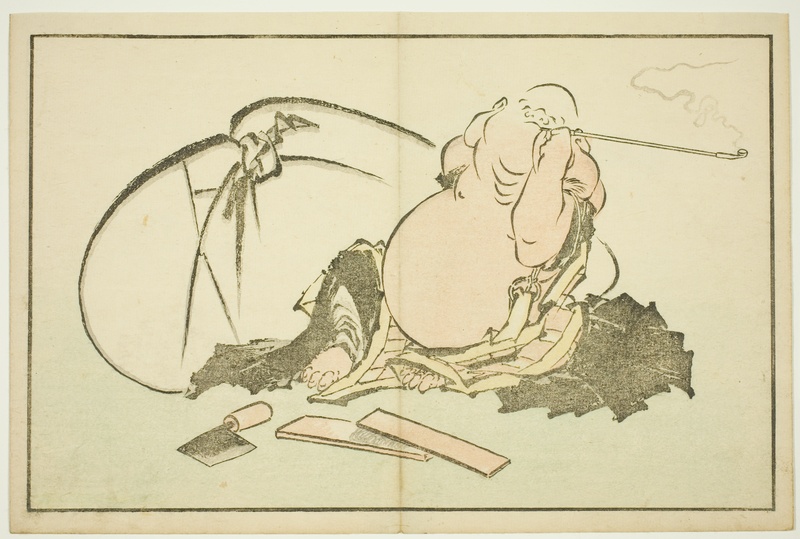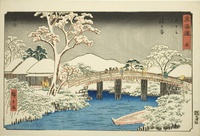Ghosts and Gods
Some of the most famous pieces of Ukiyo-e art are derived from the legends, myths, and ghost stories in Japanese culture. Because the two most popular religions in Japan during the Edo period and today – Buddhism and Shintoism – focus on nature, polytheism, and karma, many Ukiyo-e paintings have subjects like Buddhist gods of fortune and good luck, the haunting ghosts of people wronged during their lives, and demonic beings hoping to destroy Japan and bring disease to its people.
Shintoism was, and remains, the biggest religion in Japan. The basic principles of the Shinto religion state that every place and object is occupied by a deity or spirit. For this reason, the Japanese nation places an emphasis on the natural world by devoting time, money, and religious practices to worshiping and protecting nature. Shrines and temples are built throughout Japan, both in cities and throughout its natural landscapes. During the Edo period, it became a popular pastime and a religiously significant act to travel on pilgrimages to these different temple sites. Because of the religious aspects and because of Japan’s focus on preserving nature, landscapes and the depiction of gods and spirits became popular subjects for Ukiyo-e artists.
For example, the gods and deities of Buddhism and Shintoism were a common subject of many Ukiyo-e artists. Katsushika Hokusai’s (1760-1849) painting “Hotei Smoking his Pipe”depicts Hotei, the Buddhist god of good luck, smoking his pipe while he lounges on the ground. This print came from a book of prints that Hokusai created, The Picture Book of Realistic Paintings of Hokusai. Hotei has his robes around him but has them open, indicating that he is very relaxed and at peace where he is. Hotei is a Buddhist god that has been adopted by Japanese culture, and is one of the seven Japanese gods of good luck. He is also known as “The Laughing Buddha,” because of his jovial and affectionate nature, hence the contented smile on his face. Japanese citizens often turned to Hotei to grant them wishes and to ask for food and prosperity, as he was also known for his cloth bag that never emptied, which he used to feed the poor and hungry.
Another example is the painting “Ebisu, from the series ‘The Seven Gods of Good Luck in Modern Life’” by artist Suzuki Harunobu (1725-1770). This art piece depicts the Japanese god of fishing, commerce, fair trade, and food, Ebisu, as he appears before a woman and boy. Ebisu appears to be reassuring the woman in some way. He is often prayed to and worshiped at festivals for success in their work and businesses. Ebisu became especially popular during the Edo period, when merchants and artisans were making more money than they ever had before.
Other Ukiyo-e prints focused on famous legends and ghost stories in Japan. One of the most famous Ukiyo-e prints is “Takiyasha the Witch and the Skeleton Spectre” by Utagawa Kuniyoshi (1797-1861). This image actually comes from a famous Japanese novel, The Story of Utö Yasutaka. After gaining magical powers, Princess Takiyasha wants to get revenge on her father’s killer. To do so, she summons a skeleton specter in her own father’s castle, in hopes of scaring the murderer to death. This particular painting emphasizes the skill of Kuniyoshi, who rigorously studied anatomy in order to achieve the right proportions for his skeleton figure.



